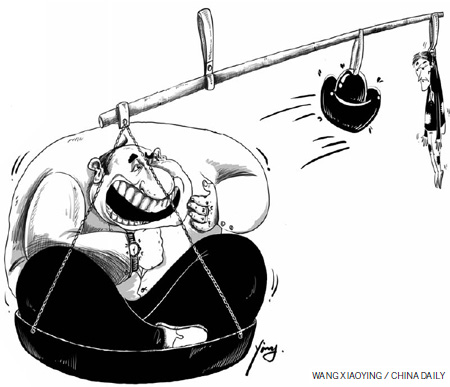A different view on income disparity

Chinese people are becoming richer, and the wealth gap in China is, as expected, growing. The just concluded Spring Festival holiday saw consumption reach about 400 billion yuan ($60.69 billion), with many rich Chinese travelling abroad to enjoy their holiday and, with some of them, buying luxury goods.
The CLSA Asia-Pacific Markets has even forecast that China will become the top luxury goods' market by 2020. In stark contrast, China's per capita GPD is still about $4,000 (2010 figures), far below advanced countries' average.
Generally speaking, most of the public debate focuses on two types of income disparity: urban-rural disparity and disparity among urban residents. The history of rural-urban income disparity shows that from the early 1990s to 2004 the ratio rose almost steadily to 3.4 times, and has since then remained stable. Another measure of income disparity is Gini coefficient, which for China is now close to 0.5. This means a small percentage of Chinese people hold a high percentage of the country's wealth.















